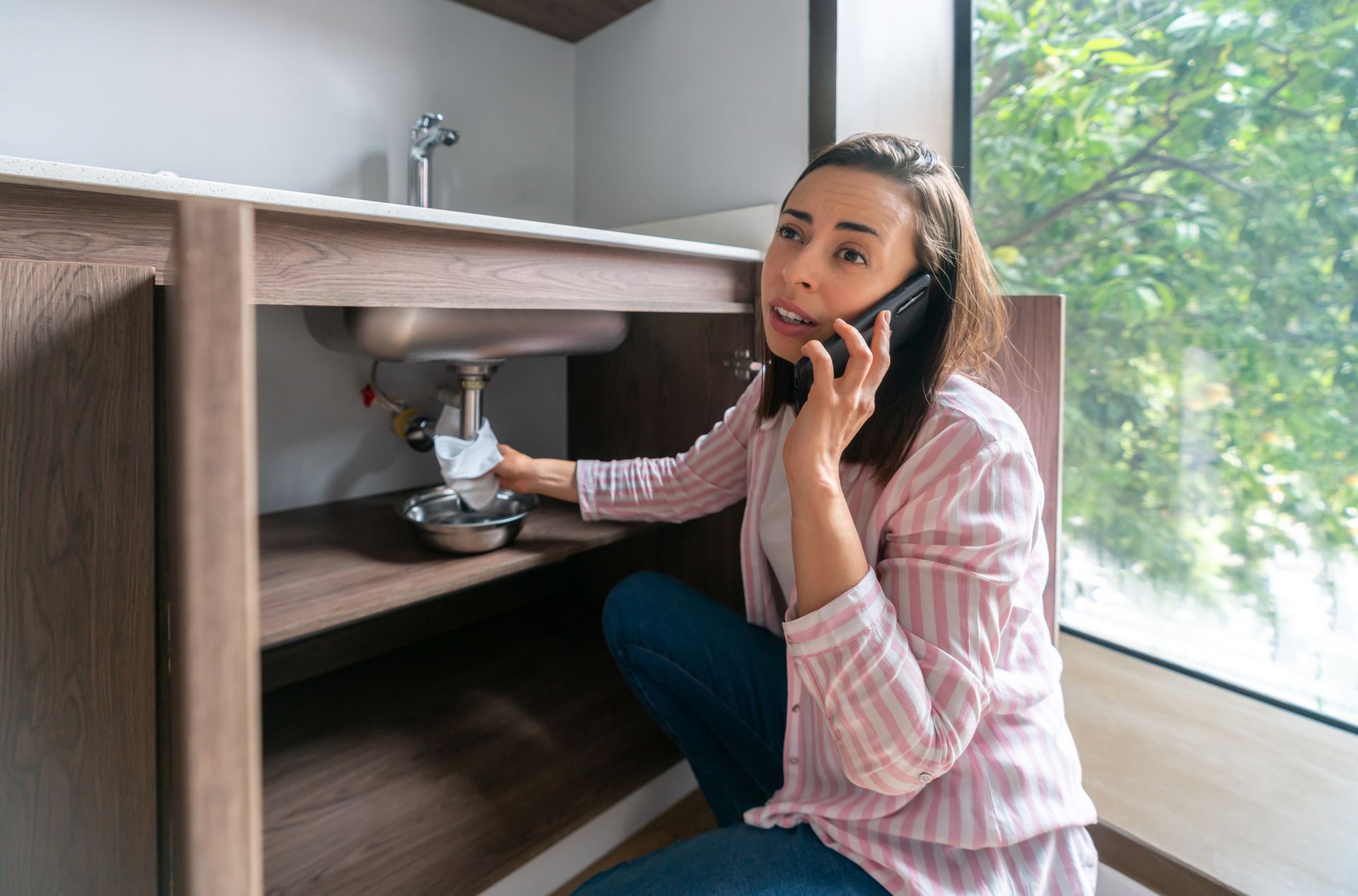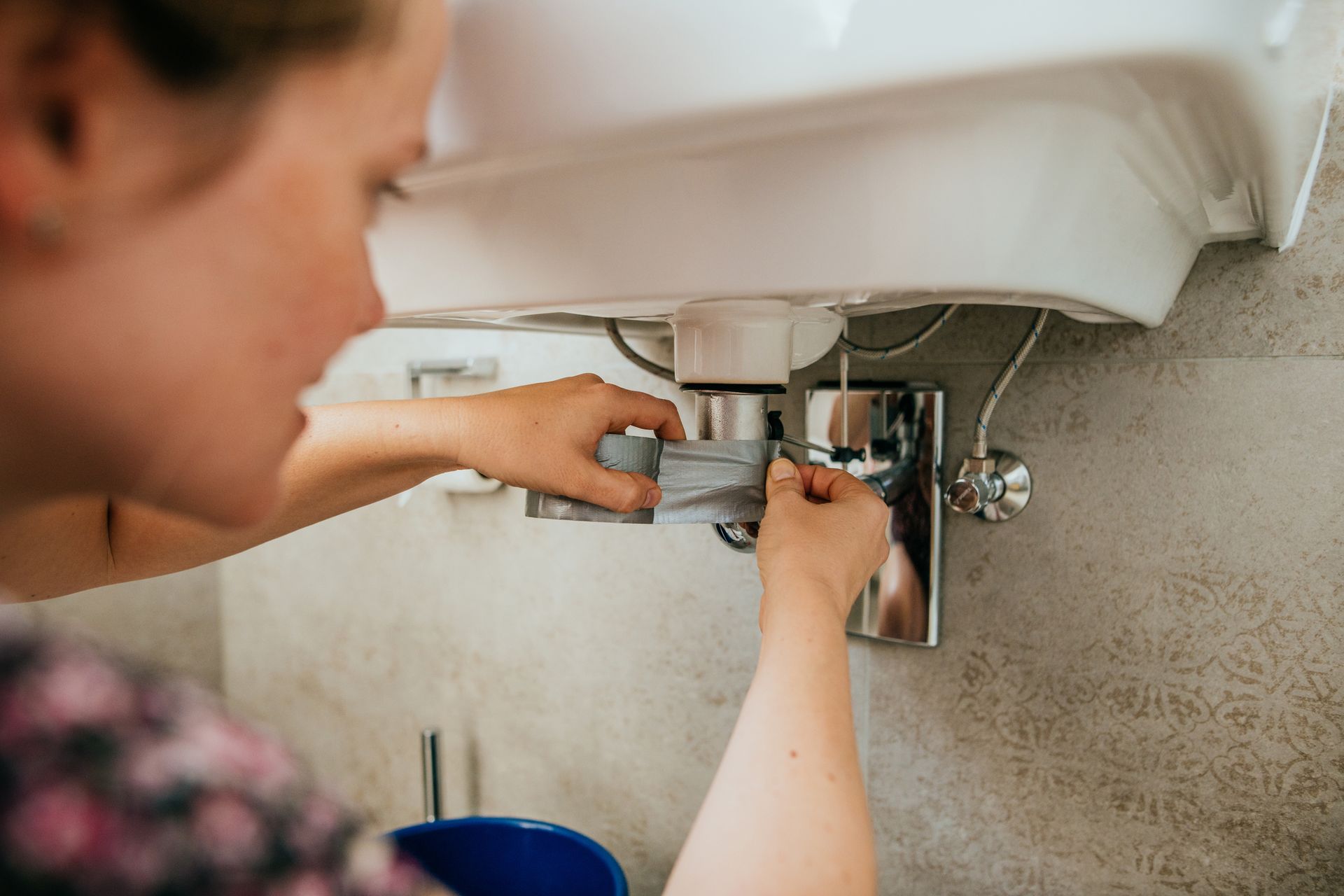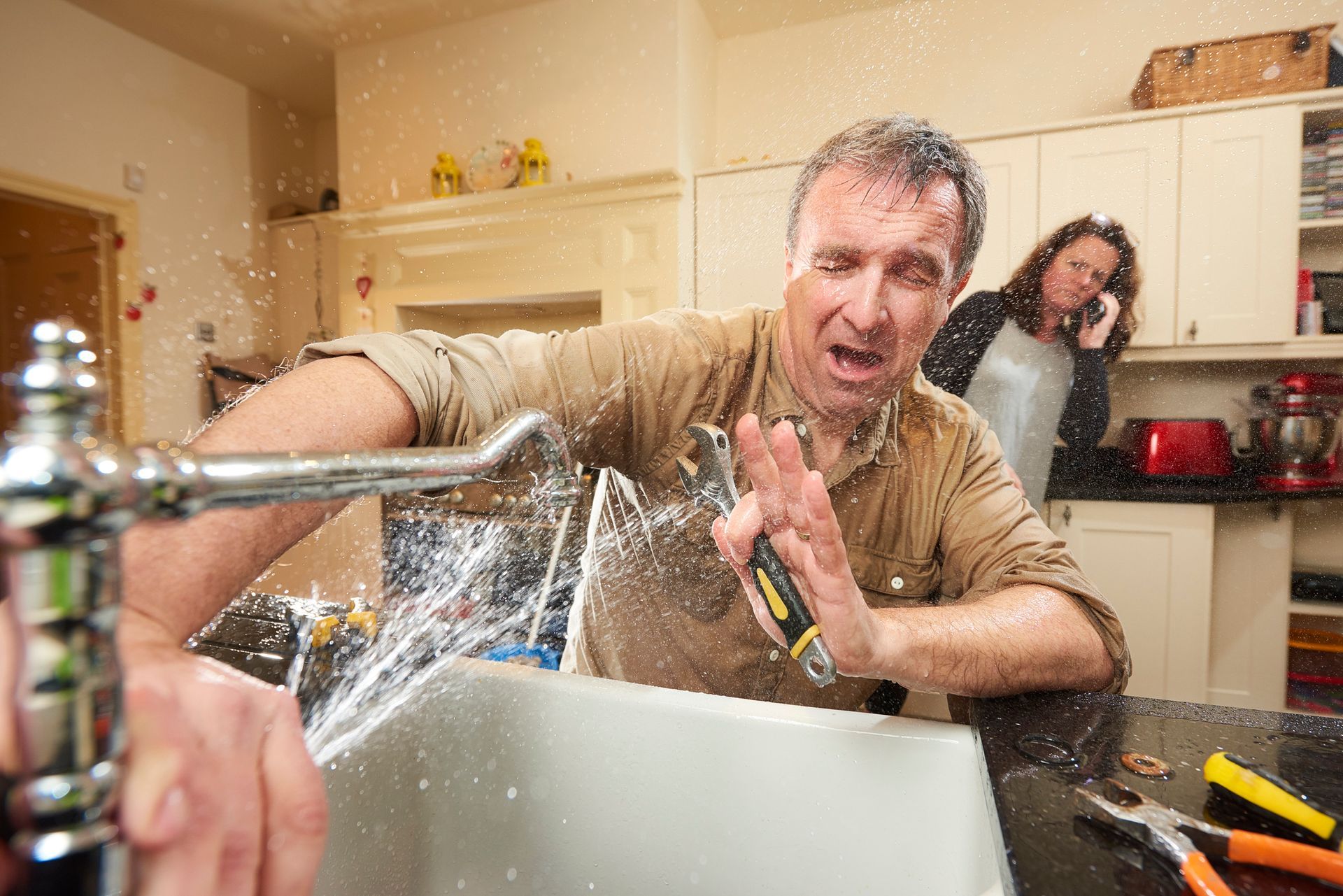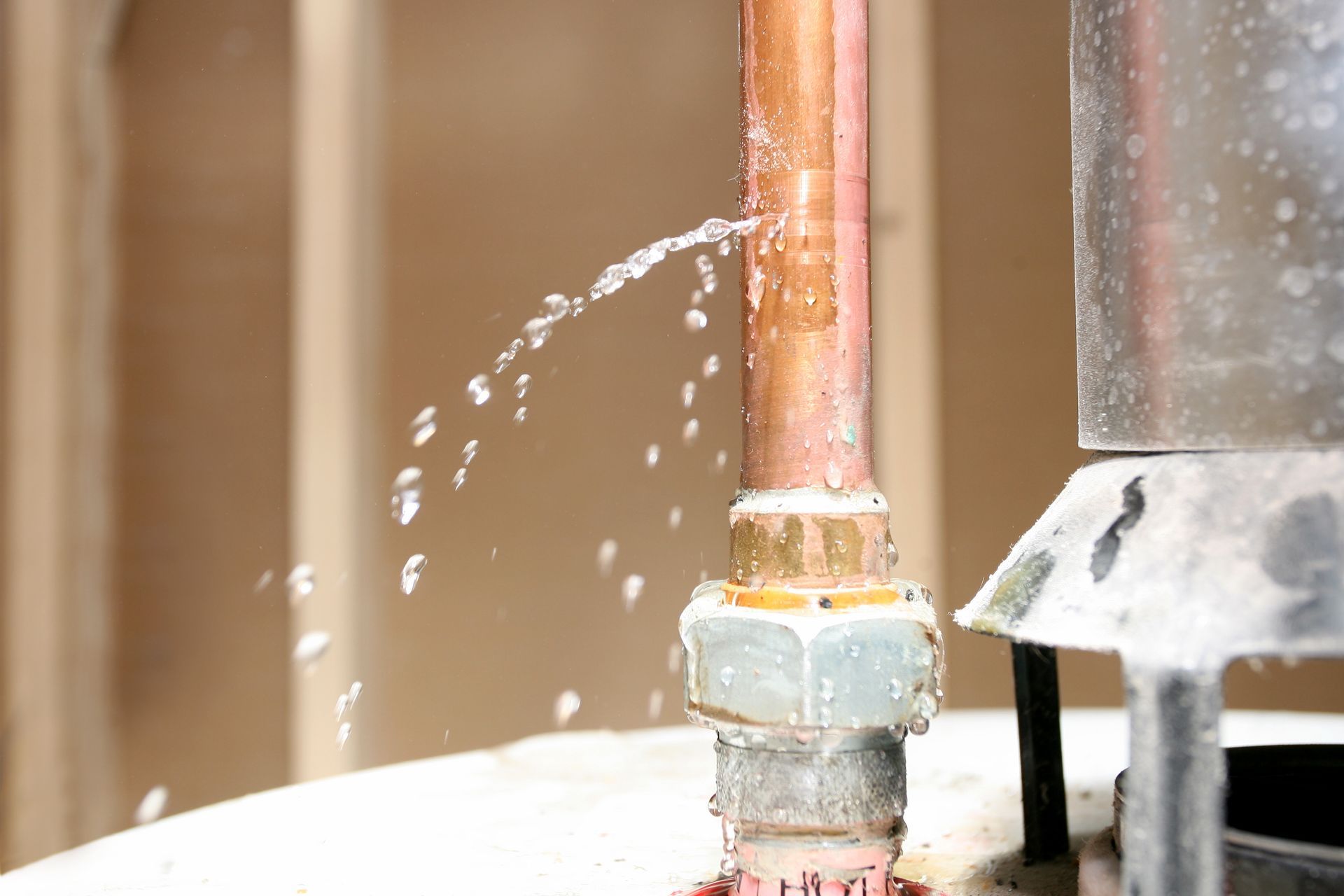6 Ways to Save Money on Your Water Bill
February 28, 2020
Perhaps you have a tight budget and you’d like to save on your utility bills. Or maybe you would like to conserve the world’s water resources and make your home more eco-friendly. Regardless of your motivation, you’ve come to the right place if you want to use less water around your home.
The average American family uses hundreds of gallons of fresh water every day. And while some of that water goes through purification for future use, a percentage of it doesn’t, and it pollutes the environment instead. In either case, your water usage costs you a significant amount of money. Preserve your bank account and your local environment by using the steps below.
1. Check for leaks.
Leaks waste a lot of water, and they often do so without your knowledge. For example, your toilet water may slowly trickle down the pipe between each flushing, and you probably won’t notice unless your toilet starts phantom flushing. If you have noticed phantom flushes (the toilet sounds like it randomly refills even if nobody has used it), call your plumber to check for leaks as soon as possible.
Faucets and showerheads usually exhibit more obvious leaks. They will drip or trickle. And while they might not look like they waste a lot of water, they do. Leaky faucets can waste several gallons per day, and you do have to pay for that water. Ask your plumber to fix these leaks as well.
If your pipes leak, you’ll notice water damage around your home. Water damage typically manifests as warping, discoloration, and mold. You’ll need a professional to open up your walls, floors, or ceilings and replace the pipes.
2. Replace your faucets, showerheads, and toilets with low-flow fixtures.
Many toilets use up to seven gallons per flush, and some showerheads spray two-and-a-half gallons per minute. However, modern technology has created low-flow fixtures that keep you from using as much water. Just remember to adjust your home’s water pressure so it doesn’t damage your new fixtures.
Insulate your pipes so you don’t have to wait for water to heat.
Most people will do anything to avoid that breath-stopping shock of cold water when they jump in the shower. So they wait anywhere between two and 10 minutes for the cold water to turn warm. In the meantime, they waste gallons and gallons of water.
Don’t pay for water you don’t use. Instead, insulate your home’s pipes so the water instantly comes out hot. You’ll use far fewer gallons and spend less on utilities.
3. Run your dishwasher and washing machine only with full loads.
Washing machines can use up to 70 gallons per load, so you shouldn’t run this appliance unless you have a full load. The same principle applies to your dishwasher.
Additionally, you should consider purchasing a low-flow, energy-efficient dishwasher and washing machine as well. These appliances may cost more up front, but they’ll soon pay for themselves in utility savings.
4. Limit your shower time.
You’ve already installed a low-flow showerhead, but you still use quite a few gallons while you spritz off for the day. Limit your showers to 10 minutes, and try to get them down to five minutes if possible.
5. Turn off the water while you scrub dishes, rinse your toothbrush, etc.
Most people let the water run while they brush their teeth, scrub dishes, rinse vegetables, etc. However, if you want to save money on water, you should turn it off between wetting and cleaning your toothbrush, between each vegetable, etc. You can even conserve more water if you simply scrape off your dishes and put them in the dishwasher rather than rinsing them.
The Bottom Line
With the tips above, you can spend less on your utilities than ever before, and you can save the planet while you’re at it. Don’t forget to call your plumber if you discover leaks or want to update your plumbing fixtures.
For toilets pricing and installation in Marco Island, Naples, Estero, Myers FL and surrounding areas, please call 239-597-9997.
You don’t worry about your garbage disposal most of the time-after all, it sits out of sight and out of mind. You only worry about it when you have to clear a backup in your sink or flush food debris down the drain. You might also feel anxious when you have to fish a ring or other valuable out of the disposal’s depths. But for the most part, you don’t think about this home feature much. Even though this device doesn’t play a starring role in your everyday comfort, you’ll notice when it doesn’t work properly. If your garbage disposal exhibits any of the signs listed below, then it either needs repair or replacement. Call your plumber right away so you can have a working disposal again as soon as possible. 1. Your Garbage Disposal Won’t Even Turn On If you flip the switch for your disposal and nothing happens, then you know you have a problem. But before you call your plumber, check the circuit breaker or fuse connected to your disposal. You may have to hit the reset button on a nearby outlet, or you might have to go to your circuit breaker box and flip a larger switch there. Once you’ve checked the breakers, try to use your disposal again. If it still refuses to move or make noise, turn it off and check the interior to see if anything has jammed the blades. If you don’t see any obstructions, and if the circuit hasn’t blown, then your garbage disposal has probably burned out, and you’ll need a plumber to at least inspect the device. He or she will probably have to replace it. 2. You Have to Press the Reset Button Every Time You Use Your Disposal If you have to push the reset button on the outlet or flip the switch on the breaker every time you use your garbage disposal, then you either have insufficient wiring or your disposal has started to age. You’ll probably have to replace the disposal if it caused the problem. Again, contact your plumber for an inspection. If he or she says your disposal has worn out, then you should get a new one. On the other hand, if your plumber says that the disposal didn’t cause the problem, then you have to speak to an electrician. Even an older electrical system should support a garbage disposal. If yours doesn’t, then you could have a serious, even dangerous, wiring problem on your hands. Have a professional check it right away. 3. Your Garbage Disposal Has a Perpetually Bad Odor You’ve tried everything. You have used hot and cold water, citrus fruits, chemical agents, and other methods to try and get the smell out of your garbage disposal-but without success. At this point, you should probably consider having a professional disassemble and clean your garbage disposal. You can also replace the device and instantly have fresher air. 4. Your Disposal Takes an Excessively Long Time to Break Down Food Your garbage disposal should have the power to break down food waste in a matter of seconds. If it takes longer, then the blades have probably dulled. You don’t need to replace your entire device in this instance, but you do need your plumber to sharpen or replace the blades. 5. Your Disposal Clogs or Jams Every Time You Use It-Even When You Flush Small Food Items Again, your disposal should have the power to break down any kind of food waste. So, if this feature jams even when you put small morsels in it, then it at least needs an inspection. Call your preferred plumbing professionals, and they’ll tell you whether a repair or replacement will return your garbage disposal to normal. 6. Your Garbage Disposal Makes a Loud Metal-on-Metal Noise When It Runs When your disposal makes a sound like metal on metal, then its parts have started to grate or move incorrectly, so it needs a tune-up. If you don’t give it a tune-up, the motor could burn out or the parts could wear so much that you’ll have to replace your garbage disposal instead of repairing it. 7. You See Water Leaking From the Disposal Plumbers can fix the leaks around the device’s seals, but if the leak comes from a crack in the device, you’ll have to buy an entirely new disposal. Luckily, with a new model and a professional installation, you won’t have to worry about repairing your disposal again for a long time. Don’t try to repair your garbage disposal on your own. You could endanger yourself and anyone around you because of the device’s sharp edges and power supply. Instead, leave the repair or the replacement to the experts, who have the skill and the equipment to keep themselves safe while they work. With a professional disposal installation, you can have better confidence that your device will work properly.
How to Prep Your Home’s Plumbing for Spring Certain areas of Florida see more moisture than other areas. You work your hardest to keep water out of your home, but what happens if your home’s plumbing fails you? You don’t want to let the problem run rampant, and you definitely shouldn’t have to deal with aftermath of a burst pipe, backed-up tub, or other plumbing issue. As you prepare your home and landscape for springtime, remember to include your home’s plumbing on your to-do list. Follow the five simple steps listed below to prevent any serious plumbing issues and keep your home’s interior as free of water as possible. 1. Stop Leaky Pipes Leaky pipes can cause a large amount of damage to your home’s walls, floors, and structural supports. When these structures become unstable, they can put your family at risk for injury, and your home could need significant repairs. Additionally, the constant, slow stream of moisture provides the perfect breeding ground for mold and mildew. If you and your loved ones are exposed to these spores, you could become ill or develop serious health issues (such as respiratory problems). You’ll already encounter a lot of moisture in the outside air, so make sure that your home stays free of water and repair any leaky pipes. You may be able to see some leaks easily. For example, if the pipes under your kitchen sink leak, you can spot the problem fairly quickly. But if a leak is further along the pipeline, you’ll need a plumber to fix the issue. To determine if you have a leak, make sure no water is running in your home. Then, stand near your pipes and listen for dripping or running water. You can also look at your water meter or water bill. If the numbers are higher than normal, you probably have a leak. 2. Check Your Appliances for Leaks You’ll also want to check your appliances for leaks. Inspect the toilets, sinks, washers, dishwashers, and water heater for leaks in the piping and tanks. If the appliances do leak, you’ll likely see a puddle of water surrounding them. 3. Unclog Drains If you have clogged drains anywhere in your home, you’ll want to unclog them immediately. Clogs prevent water from flowing away from your home, and that water could backflow into your house. The last thing you want to deal with this spring is repairing water damage caused by an overflowing toilet. Sometimes surface clogs, like hair that rests in the opening of your shower drain, don’t take much effort to remove. However, for clogs that sit deeper in the pipe, you’ll need a plumber to manage the problem. Your plumber will likely use hydro jetting to push the clog out of the pipeline. Additionally, hydro jetting can remove any tree roots that may have broken your pipes and grown in them. Your plumber can even use this service to clean the rest of the pipes in your home so that you reduce the risk of developing a clog later on. 4. Flush Your Water Heater Over time, sediment and mineral deposits build up inside your water heater tank. If left unchecked, that buildup could cause serious problems for your plumbing system. For example, the buildup could prevent water from flowing through your water heater and into your pipes. Or if the buildup becomes too big, it could crack or burst a pipe or a portion of the tank. Contact a plumbing expert and ask him or her to flush the water heater and remove this buildup so you can conveniently enjoy hot water year-round. 5. Inspect Your Backflow Preventer and Cross Connections Depending on where you live, you likely have a backflow preventer somewhere on your property. Additionally, you probably have cross connections as well. The backflow preventer stops contaminants from entering public water sources from your individual pipelines, while the cross connections are devices that connect the various types of piping in your home. The cross connections prevent other substances from getting into your water. For example, the connections carry solids, gases, chemicals, and other liquids that alter the quality, taste, color, and odor of your water. To ensure that your home has a clean water supply, and to keep public water sources clean for your neighbors, have your backflow preventer and cross connections inspected. If a big storm hits, you’ll also want to have these devices inspected soon after to prevent contaminants from entering the water supply near your home. Take the steps listed above to prepare your home’s plumbing for the spring weather. Remember to get in touch with a plumbing professional to perform many of these complex tasks. As you rely on a certified technician to perform these tasks, you reduce your risk for encountering issues in the future. You also ensure that your plumbing system works properly all season long. Additionally, look for a plumber who offers emergency plumbing services—just in case you encounter a plumbing issue unexpectedly. Want more tips about how a plumber can keep your home’s plumbing in optimal condition? Read through our other blog posts. You’ll find various articles that address a number of concerns and issues.












